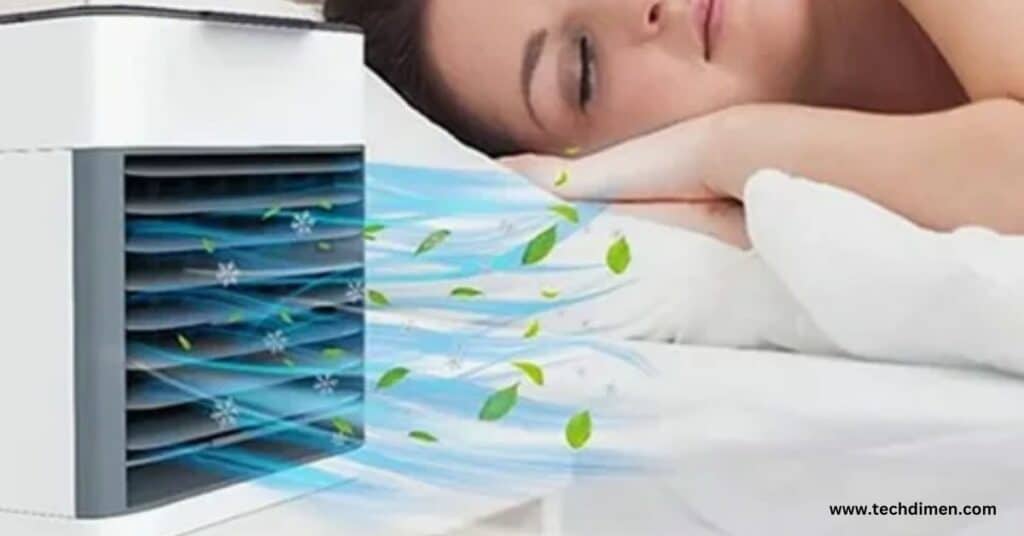Chill Technology is transforming the way we cool, store, and preserve. Unlike traditional refrigeration, it uses advanced methods like thermal energy storage, phase change materials (PCMs), and solar powered systems to deliver reliable cooling even without electricity.
What Is Chill Technology and Why It Matters
Chill technology refers to innovative methods and systems used to provide cooling in an energy efficient, sustainable, or off grid manner. Unlike traditional compressor based refrigeration, chill tech relies on alternative processes such as thermal mass, phase change materials (PCMs), solid state cooling, and absorption chillers. This category includes both passive and active cooling technologies designed to support healthcare, food preservation, consumer products, and more.
Chill technology is not only reshaping how we cool environments and products, but it’s also solving critical challenges in off grid locations, developing countries, and emergency response situations where electricity is scarce or unreliable.
Core Principles Behind Chill Technologies
Thermal Mass and Heat Absorption Mechanics
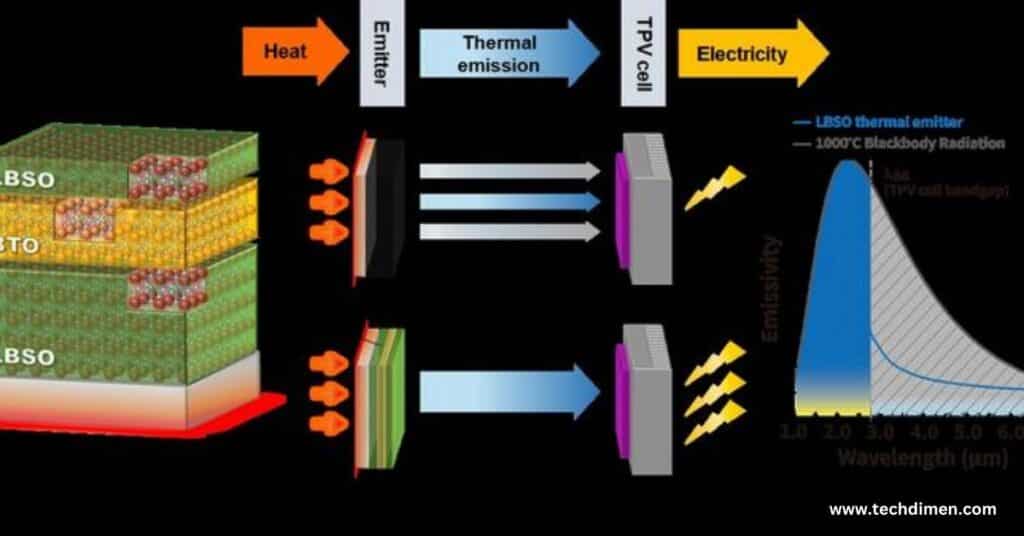
Thermal mass works by absorbing and storing heat, then slowly releasing it over time. This is the core behind many non electric refrigeration models that maintain a steady temperature without constant power. Materials like water, stone, or PCM blocks are often used for this purpose.
Phase Change Materials (PCMs) and Latent Heat Storage
PCMs absorb heat during melting and release it while freezing. This latent heat property enables PCM cooling systems to maintain refrigeration temperatures even during power outages. PCMs are ideal for cold chain cooling and medical cold storage.
Thermoelectric and Solid State Cooling Systems
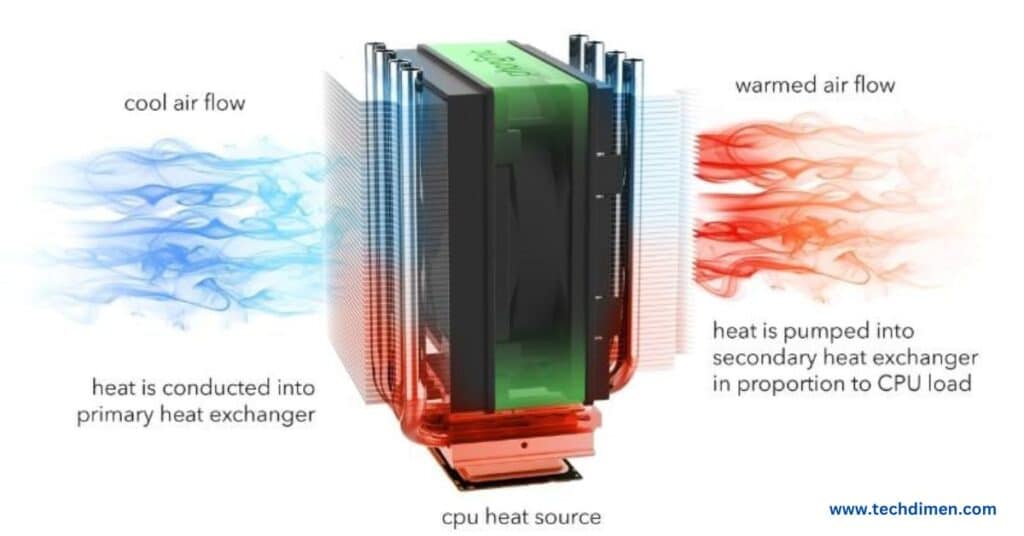
Solid state cooling, such as those using plasma micro fan cooling or Peltier modules, leverages semiconductor materials to pump heat away from an object without moving parts or refrigerants. This innovation is leading the way for low energy cooling devices in electronics and personal gadgets.
Heat Driven Absorption Cycles
Absorption chillers utilize a heat source, often solar powered or from waste heat, to initiate a cooling process. Common substances used include ammonia water or lithium bromide water mixtures. These systems are especially suited for industrial or large scale refrigeration without electricity.
Major Categories of Chill Technology in Use Today
Passive Cooling Systems
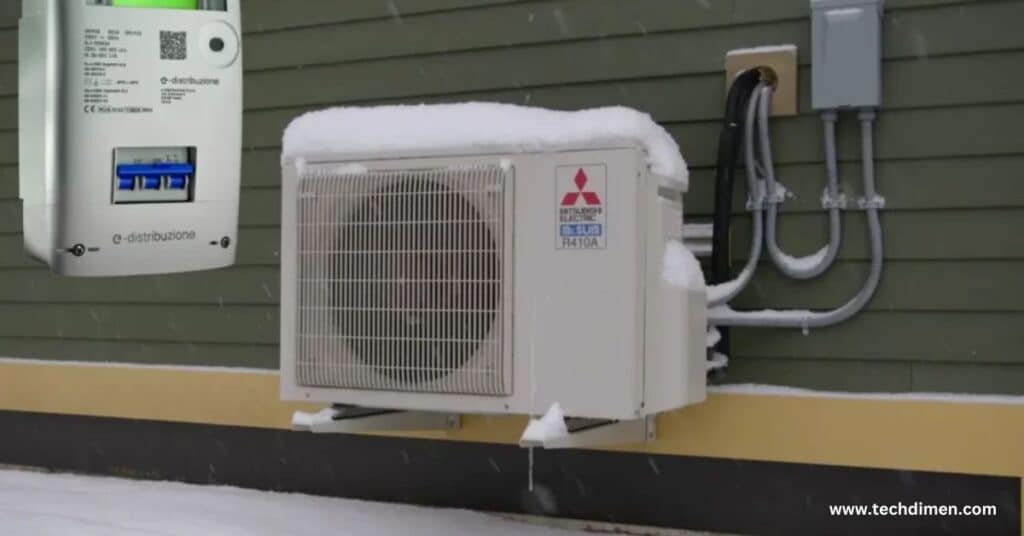
Passive cooling systems do not require electricity or mechanical parts. They use insulation, thermal mass, or PCMs to maintain cold environments. Ice lined refrigerators are used for vaccine refrigeration solutions. Cold boxes with PCM inserts extend cold life during transport. Zero energy cooling chambers (ZECCs) are deployed for storing produce in off grid farms.
Active Cooling Systems
Active systems use external power or heat sources to function but are more energy efficient than conventional refrigeration. Solar powered absorption chillers are increasingly used in large facilities. Solid state cooling technology, relying on thermoelectric materials, offers compact and quiet performance. Technologies developed by Chill Technologies UK employ lithium bromide absorption cycles for scalable cooling.
On Demand and Smart Beverage Chilling
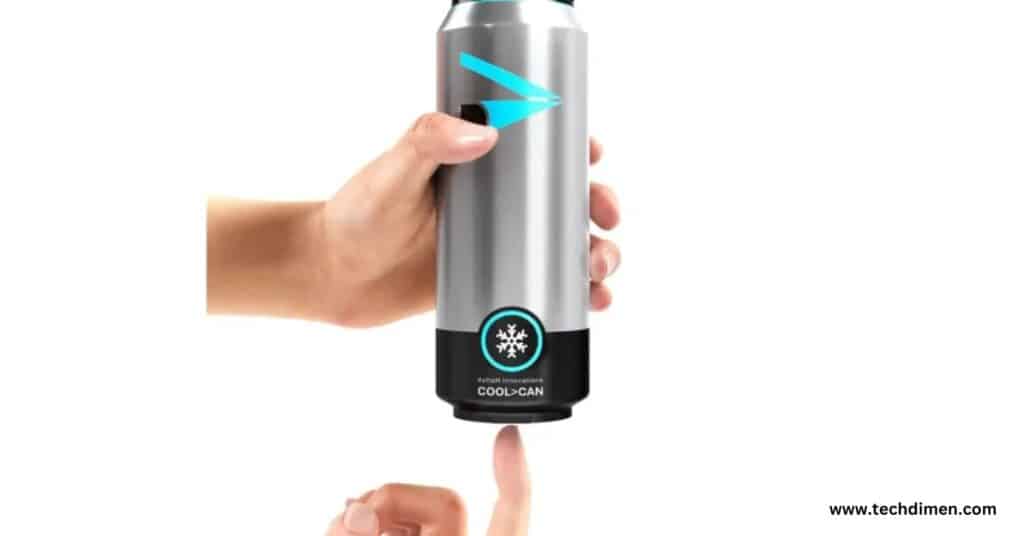
On demand drink chillers are consumer friendly devices designed to cool drinks in seconds. The Rapid Cool instant cooler chills beverages from room temperature to 4°C in under 45 seconds using spinning liquid or gas based systems. Chill It beverage chillers are battery powered portable units popular in the hospitality industry. Self chilling cans, such as the Coca Cola Chill Can, feature integrated CO2 cartridges that trigger a rapid cooling process when activated.
How Chill Technology Actually Works
Chill technology functions based on a range of scientific principles. Thermal mass allows the storage of heat that is gradually released, used in PCM cold boxes and stone insulated units. Phase change involves the absorption and release of energy during material transitions, enabling Sure Chill fridges and other PCM based devices to maintain temperatures effectively. Thermoelectric systems utilize electric currents to create temperature differences, as seen in Peltier modules and plasma fan innovations. Absorption systems rely on heat to drive a chemical process that results in cooling, which is the basis for solar chillers and ammonia based units.
Key Advantages of Chill Technology

The benefits of chill technology are both immediate and long term. These systems offer remarkable energy efficiency by avoiding energy hungry compressors. Many setups are zero emission, using no refrigerants or harmful gases. Reliability in off grid and unstable power environments makes them ideal for remote applications. Their ability to maintain cold storage prevents spoilage of temperature-sensitive items like vaccines, blood, or insulin. They also contribute to food security by reducing post harvest losses and extending the freshness of perishable items.
the World Applications by Sector
Healthcare
Chill technology for vaccines is critical in rural healthcare settings. Sure Chill technology enables off grid clinics to store vaccines for up to 10 days without electricity. The Solar Chill refrigerator, endorsed by WHO and Gavi, is solar powered and requires no batteries or backup systems, making it ideal for remote locations.
Food and Beverage
Restaurants use RapidCool devices to provide beverages at optimal temperatures instantly, improving service quality. Local grocers and retail outlets use the Chill It beverage chiller to attract impulse purchases and reduce refrigeration costs. These products support energy savings and faster customer service.
Consumer Electronics

Smartphones and laptops benefit from embedded solid state cooling technology that manages internal heat without fans or refrigerants. Devices using plasma micro-fan cooling remain cool and silent, improving user comfort and battery longevity.
Data Centers
Modern data centers are beginning to adopt chiller free cooling solutions that rely on phase change materials to absorb and release heat dynamically. AI driven thermal systems now analyze workloads in time to adjust cooling precisely.
Agriculture and Storage
Farmers in arid and tropical climates use zero energy cooling chambers to keep produce fresh. These systems work through evaporative cooling and thermal mass principles. Off grid cooling for rural areas has helped reduce post harvest food loss by over 30 percent in some regions.
Breakthrough Innovations in Chill Technology

Sure Chill refrigerators use ice and thermal mass to maintain a constant 4°C interior for over a week without electricity. This is a game-changer for clinics without reliable power.
RapidCool, a European Union-backed device, chills beverages in less than a minute by spinning liquid around a container while extracting heat via conductive surfaces. It’s currently in trial stages with major hospitality brands.
The Chill Can is a self-contained aluminum can embedded with a CO2 based cooling module. When activated, it cools the beverage inside without external refrigeration, gaining traction in convenience retail.
SolarChill units, now deployed in more than 60 countries, operate entirely on solar energy. Developed in partnership with PATH, Gavi, and WHO, these systems use natural refrigerants and provide reliable refrigeration with zero battery dependency.
Trends Shaping the Chill Technology Market
There is strong momentum in the adoption of solar powered refrigeration, especially in humanitarian logistics. Portable vaccine chillers are increasingly essential in healthcare distribution networks. Integration of Internet of Things (IoT) systems allows for in time monitoring of temperature-sensitive goods. Chill technology for developing countries is becoming a major investment area due to its resilience and independence from traditional infrastructure.
Market Challenges and Growth Barriers
The cost of production for high tech components can limit the scalability of chill systems in low-income regions. Some installations require trained personnel, which is not always available in rural areas. Meeting compliance standards across multiple jurisdictions remains a challenge. There’s also a need for greater consumer education to encourage the adoption of sustainable refrigeration methods.
How to Choose the Right Chill Solution

When evaluating chill technology, consider how long the unit can maintain temperature without power. Assess the acceptable operating temperature range and its stability. Recharge or regeneration time also plays a key role. Material composition such as PCM types or refrigerant chemicals can impact effectiveness in different climates. Consider where the system will be used urban or rural, dry or humid, mobile or stationary before making a decision.
Ask vendors about the energy efficiency ratings of their devices. Determine whether their systems align with sustainable refrigeration methods and check for compliance with cold chain protocols set by organizations like WHO. Evaluate performance data such as hold time, energy usage, cooling speed, and field durability before purchase.
Case Studies of Chill Technology in Action
In Sub Saharan Africa, Gavi deployed over 1,200 Sure Chill refrigerators in clinics, reducing vaccine spoilage by 80 percent. These fridges have been especially successful in West African regions with power outages lasting several days.
RapidCool units tested in Marriott and Hilton hotels led to a 90 percent reduction in time taken to serve chilled beverages, improving customer satisfaction and cutting energy costs significantly.
7 Eleven’s limited release of self-chilling Coca Cola cans led to a 15 percent boost in beverage sales, showing strong demand for novelty and convenience in on-the-go products.
Clinics in Nepal’s Himalayan regions have adopted SolarChill units, enabling uninterrupted vaccine storage in areas completely off the grid. These deployments demonstrate how chill tech solutions can support healthcare infrastructure in challenging environments.
Future of Chill Technology: Where Innovation Is Headed

Artificial intelligence is now being used to create predictive cooling systems that respond to environmental and usage conditions in real time. Hybrid systems are emerging, combining PCM, solar, and thermoelectric modules to optimize performance. Microgrid-coupled chillers are being developed to support disaster response units and mobile hospitals. Chill technology is also being integrated into smart city plans and vertical farming setups to maintain optimal temperatures without adding to energy burdens.
Chill Technology
| Category | Details |
|---|---|
| Definition | Innovative cooling solutions that work efficiently with or without electricity |
| Core Technologies | Sure Chill cooling, absorption chillers, phase change materials, solid state cooling |
| Cooling Types | Passive cooling, active cooling, on demand beverage chilling |
| Power Sources | Solar, thermal mass, waste heat, battery, grid, off grid |
| Key Applications | Vaccine storage, beverage chilling, food preservation, rural health systems |
| Main Benefits | Low energy use, sustainable, reliable in power outages, eco friendly |
| Industry Use Cases | Healthcare, food logistics, hospitality, disaster relief, rural infrastructure |
| Popular Brands | Sure Chill, RapidCool, Chill It, Chill Technologies UK |
| Target Environments | Off-grid areas, mobile clinics, retail stores, emergency services |
| Emerging Innovations | Self chilling cans, plasma micro-fans, PCM based fridges |
FAQs About Chill Technology
What Is Chill Technology?
Chill Technology refers to innovative cooling systems that maintain cold temperatures using advanced methods like thermal energy storage, absorption cooling, or phase change materials (PCMs). Some models work without constant electricity, making them ideal for off-grid or emergency use.
How Does Chill Technology Operate Without Electricity?
Some chillers use thermal mass or PCM to store cold. For example, Sure Chill systems freeze a layer of water that stays solid for days. When power is lost, the stored cold is gradually released, keeping the interior cool without any electrical input.
What Are the Main Types of Chill Technology?
Passive Cooling Systems
These include ice lined refrigerators and PCM based cold boxes that work by absorbing and releasing cold over time without active power sources.
Active Cooling Systems
Systems like solar powered absorption chillers or solid state micro fans that require minimal power but use advanced methods to regulate temperature.
Instant/On-Demand Beverage Chillers
These cool drinks in seconds using rapid thermal exchange. Products like RapidCool and Chill It are leading examples.
What Is Sure Chill Technology?
Sure Chill is a patented system that creates a thermal buffer of ice inside the unit. Even if electricity is cut off, the stored ice keeps the internal temperature between 2°C and 8°C for up to 10 days critical for vaccines and medicine.
Is Chill Technology Energy-Efficient?
Yes. Most systems are optimized for minimal energy consumption. They rely on natural thermal behavior, solar power, or waste heat, making them both cost effective and sustainable over time.
How Does Chill Technology Differ from Traditional Refrigeration?
Traditional systems rely on compressors and continuous electricity. Chill Technology, on the other hand, can work intermittently or without grid power. It uses advanced physics and materials to store cold and release it gradually.
Can Chill Technology Be Used to Cool Beverages?
Yes. On demand chillers like Chill It and Rapid Cool can chill drinks from room temperature to ice cold in under a minute, making them ideal for events, bars, and convenience retail settings.
What Are Phase Change Materials (PCMs) and How Do They Work?
PCMs absorb or release heat during phase transitions (like from solid to liquid). They help stabilize the internal temperature of cooling units, allowing for reliable cold storage even without external power.
Is Chill Technology Safe for Storing Vaccines and Medicine?
Absolutely. Organizations like WHO, UNICEF, and Médecins Sans Frontières use chill systems for vaccine preservation. These units maintain stable, regulated temperatures essential for pharmaceutical safety.
How Long Can Chill Technology Maintain Cold Without Power?
Depending on the model, chillers can keep temperatures stable for 5 to 10 days using stored cold from ice or PCMs. This makes them ideal for remote areas or locations with unreliable electricity.
Are These Systems Expensive to Install?
While the initial cost may be higher than traditional fridges, the long-term savings in energy and maintenance, especially in remote locations, make them a smart investment. Many units pay for themselves over time.
Final Thoughts
Chill technology isn’t just about preserving perishables. It is a solution to some of the world’s most pressing challenges, from public health to food security to climate adaptation. As global demand grows for sustainable and off grid cooling systems, solutions like Sure Chill refrigerators, absorption chillers, and on-demand drink chillers are redefining what’s possible. From refrigeration with thermal mass to advanced cold storage solutions, this field holds the potential to support communities, protect life saving medicines, and help us live more sustainably on a warming planet.

Jhon AJS is a tech enthusiast and author at Tech Dimen, where he explores the latest trends in technology and TV dimensions. With a passion for simplifying complex topics, Jhon aims to make tech accessible and engaging for readers of all levels.

